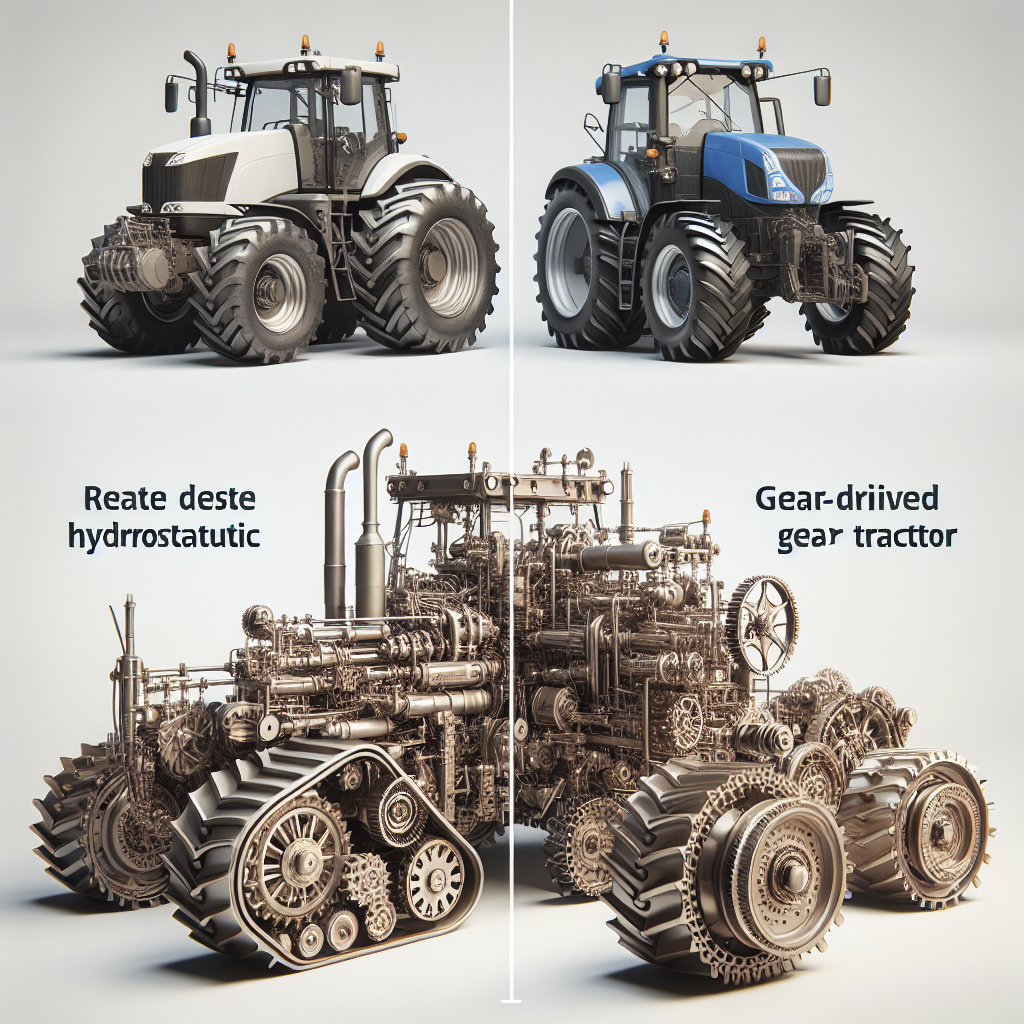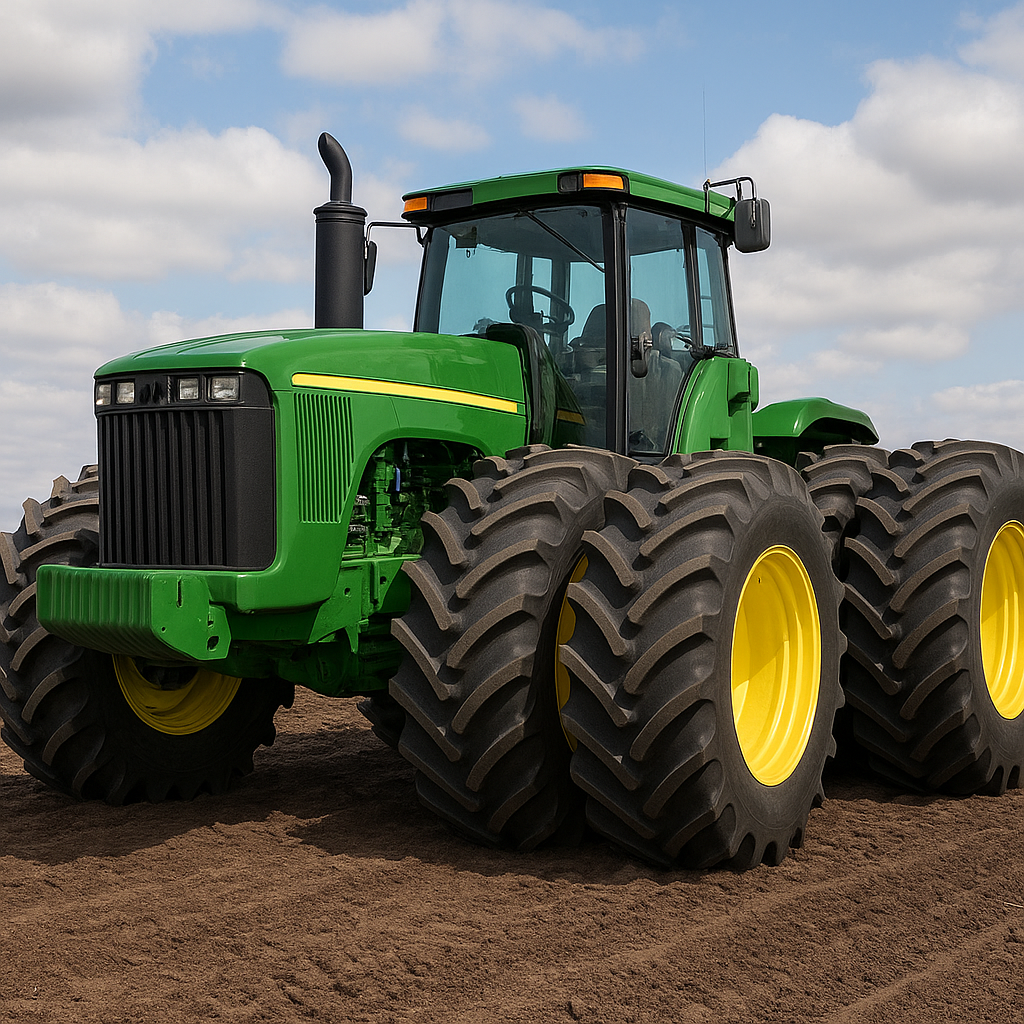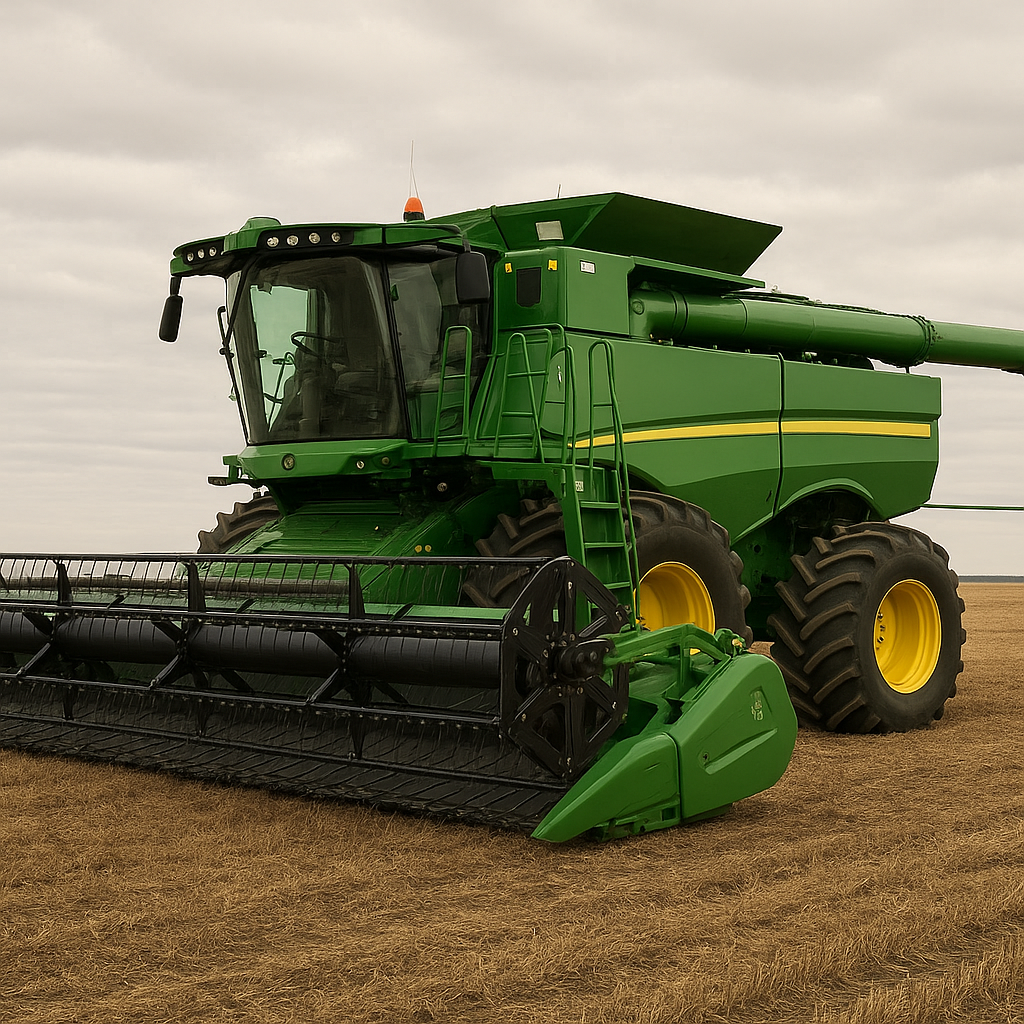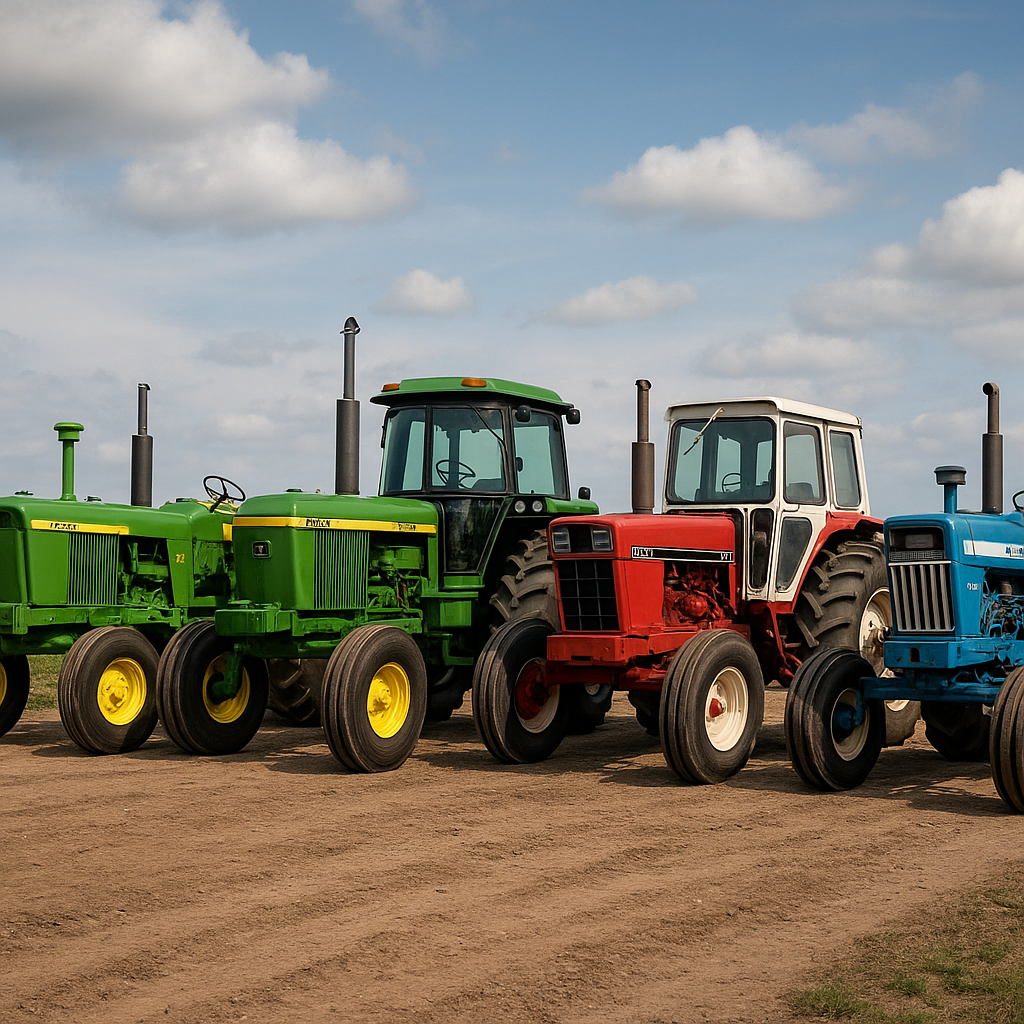When it comes to choosing the right tractor for your agricultural needs, one of the most critical decisions you’ll face is selecting the type of transmission. The two primary options are hydrostatic and gear-driven transmissions, each with its own set of advantages and disadvantages. Understanding the differences between these two types of transmissions can help you make an informed decision that best suits your specific requirements.
Understanding Hydrostatic Transmissions
Hydrostatic transmissions are known for their ease of use and versatility. Unlike traditional gear-driven systems, hydrostatic transmissions use hydraulic fluid to transfer power from the engine to the wheels. This type of transmission allows for smooth and continuous speed adjustments, making it ideal for tasks that require frequent changes in speed and direction.
Advantages of Hydrostatic Transmissions
- Ease of Use: One of the most significant benefits of hydrostatic transmissions is their user-friendly operation. With a simple pedal or lever, operators can easily control the speed and direction of the tractor without the need for manual gear shifting.
- Precision Control: Hydrostatic transmissions offer precise control over the tractor’s speed, making them ideal for tasks that require careful maneuvering, such as mowing, tilling, and landscaping.
- Reduced Wear and Tear: Because there are no gears to shift, hydrostatic transmissions experience less mechanical wear and tear, potentially leading to a longer lifespan and reduced maintenance costs.
Disadvantages of Hydrostatic Transmissions
- Cost: Hydrostatic transmissions are generally more expensive than gear-driven systems, both in terms of initial purchase price and potential repair costs.
- Efficiency: While hydrostatic transmissions offer excellent control, they can be less fuel-efficient compared to gear-driven systems, particularly in heavy-duty applications.
- Power Loss: Some power loss can occur in hydrostatic systems due to the hydraulic fluid, which can be a disadvantage in tasks that require maximum power output.
Exploring Gear-Driven Transmissions
Gear-driven transmissions, also known as manual or mechanical transmissions, have been the standard in tractors for many years. These systems use a series of gears to transfer power from the engine to the wheels, allowing for a range of speed and torque options. Gear-driven transmissions are known for their durability and efficiency, making them a popular choice for heavy-duty agricultural tasks.
Advantages of Gear-Driven Transmissions
- Durability: Gear-driven transmissions are built to withstand heavy use and are often more durable than hydrostatic systems. This makes them ideal for tasks that require significant power and torque, such as plowing and hauling.
- Efficiency: These transmissions are generally more fuel-efficient than hydrostatic systems, as they do not experience the same level of power loss. This can result in lower operating costs over time.
- Cost-Effective: Gear-driven tractors are typically less expensive to purchase and maintain compared to their hydrostatic counterparts, making them a cost-effective option for many farmers.
Disadvantages of Gear-Driven Transmissions
- Complexity: Operating a gear-driven tractor requires more skill and experience, as the operator must manually shift gears to adjust speed and direction. This can be challenging for novice users.
- Less Precision: While gear-driven transmissions offer excellent power and efficiency, they do not provide the same level of precision control as hydrostatic systems. This can be a disadvantage in tasks that require fine-tuned maneuvering.
- Increased Wear and Tear: The mechanical components of gear-driven transmissions are subject to wear and tear, which can lead to higher maintenance costs over time.
Making the Right Choice
Choosing between a hydrostatic and gear-driven transmission ultimately depends on your specific needs and preferences. If you prioritize ease of use, precision control, and reduced wear and tear, a hydrostatic transmission may be the best choice for you. On the other hand, if you require a durable, efficient, and cost-effective solution for heavy-duty tasks, a gear-driven transmission might be the better option.
Consider the following factors when making your decision:
- Type of Tasks: Evaluate the types of tasks you will be performing with your tractor. Hydrostatic transmissions are ideal for tasks that require frequent speed and direction changes, while gear-driven transmissions excel in heavy-duty applications.
- Operator Experience: Consider the experience level of the operator. Hydrostatic transmissions are more user-friendly and easier to operate, making them a good choice for novice users. Gear-driven transmissions require more skill and experience to operate effectively.
- Budget: Assess your budget for both the initial purchase and ongoing maintenance costs. Hydrostatic transmissions tend to be more expensive, while gear-driven systems are generally more cost-effective.
- Fuel Efficiency: If fuel efficiency is a priority, a gear-driven transmission may be the better choice, as they are typically more efficient than hydrostatic systems.
Conclusion
Both hydrostatic and gear-driven transmissions offer unique advantages and disadvantages, and the right choice depends on your specific needs and preferences. By carefully considering the type of tasks you will be performing, the experience level of the operator, your budget, and your priorities for fuel efficiency, you can make an informed decision that will help you get the most out of your tractor.
Ultimately, whether you choose a hydrostatic or gear-driven transmission, investing in a high-quality tractor that meets your needs will ensure that you can tackle your agricultural tasks with confidence and efficiency.









